Winter Wellness: Aligning with Nature's Restorative Rhythms The bleak winter landscape beckons us to slow down. Trees skeletal, bare of leaves, remind us to conserve our energy. Hibernating animals sleep through winter blizzards. Nature is dormant, and the rhythm of the season is rest.
Somewhere deep inside we all know that our wellbeing depends on our ability to live in harmony with the natural rhythm of the Sun, the Moon, the Earth, and the turning of the seasons. The artificial nature of modern homes and workplaces allow us to override our diurnal rhythms and the promptings of our body clock. Of course, lighting, heating, phones, and computers are all valuable assets in our lives, but our health can suffer when we are out of synch with the natural rhythm of the natural world. The winter blues, lethargy, frenetic activity followed by overwhelm and tiredness, are all symptoms of this imbalance. In this article we’ll look at ways that we can realign our energy with the prevailing energy of the season, respecting our need to rest, whilst at the same time topping up our energy levels so that we’re able to cope with the demands and opportunities of the season... Read more of this OM Yoga article...
0 Comments
Hanging out in graveyards and sitting meditating upon a corpse, is probably not, I’d guess, how you’ll be spending Halloween. Macabre as it may seem, the Buddha encouraged his monks and nuns to go to the charnel ground to receive a lesson in impermanence by contemplating the body of someone who had recently died. The charnel ground is the place where the dead are cremated; in Buddhism it’s considered to be a sacred space where the conditions are right for transforming fear into awakening. Of course, although it’s unlikely that you would go to such extremes in your own meditation practice, the gentle discipline of our yoga practice is to learn to turn toward unpleasant emotions, rather than push them away.
Although it’s natural to be afraid of the dark, our spiritual practice trains us to turn and face our fear in order that its hold over us might be diminished. We can expend a lot of energy avoiding facing our fears. Consequently, the more we push our fears down, the greater power they exert over us. What we resist persists. Our yoga and mindfulness practice can help us to embrace and engage with our fears, moving through them and out into the light again. Continue reading this OM Yoga article... 5 Autumn Meditations to Lighten Up Your Mood
Bringing Sunshine to Autumn Days As autumn turns to winter, do you feel a grey cloud hanging over you and a sense of dread at the onset of the shorter, darker, cooler days? If so, help is at hand to fight off those winter blues and avoid descending into the winter slump. In this article I’ll outline 5 Seasonal Yoga inspired meditations and mindfulness practices that will lighten up your mood and bring sunshine into the darkest of winter days.
At the moment I am mostly blogging on my Yoga Through the Year website. Please visit my Yoga Through the Year website for more yoga inspiration and to sign up for my Seasonal Yoga newsletter.
www.yogathroughtheyear.com In your yoga practice visualising images of light within the body can lighten your mood and help you to shake off that tail end of winter slump. This week in class we've used a few simple ways of introducing images of light into our practice, and I will describe some of them in this post.
The practice below is one I developed myself at home over a few days of sessions focusing on the Ajna chakra and visualising images of light. The notes below were originally for my eyes only as an aide memoire to remind me of what I'd done during the session. So please excuse their unpolished nature, but hopefully they will remind you what we've been doing in class this week. NB: a note on abbreviations. Where it says "AK" that means- hold the breath in at the end of the inhale. Where it says "BK" it means - hold the breath out at the end of the exhale. So "AK love and light" means hold the breath in and silently repeat "love and light". This week in class we're focusing on the second chakra, Svadhisthana. The element associated with this chakra (subtle energy centre) is water and it helps us develop a sense of flow. When this chakra is in balance everything flows well; our body, circulatory system, our thoughts and feelings, how we relate to others, and our ability to go with the flow of life. Over the past few weeks in class we've been focusing on the first, base chakra, Muladhara. Its element is earth, which has helped us to develop a sense of rootedness and being grounded. We are now going to build on those strong rooted foundations to develop a sense of flow. So when you do the Svadhisthana Flow yoga practice pictured below keep in mind those two words: root and flow. In the practice below we use watery flowing movements, with a focus on wave-like breathing. We also place our awareness in the lower belly, which is the area that is associated with this chakra. We use the bija mantra VAM (pronounced VUM), in some of our yoga poses, sometimes sounding it and other times silently. The pin-people below were just intended as an aide-memoire for me, so excuse the unpolished nature of them. It's beyond the scope of this blog to give detailed instructions for the practice. However, the drawings below will help jog your memory about what we've been doing in class, in case you want to try the practice yourself at home. Enjoy! I became fascinated with the chakras in the early part of the millennium. Below are some of the notes I made on the second chakra in preparation for teaching a course on the chakras. When I'm exploring a subject I find it useful to jot down all my thoughts (brain storm or blue-sky thinking) to get my ideas flowing. I hope this blog post whets your appetite for creatively exploring the chakras in your own yoga practice or in your teaching.
What supports you in your life? What gives you the strength to live a heart-felt and authentic life? This week in class we have been focusing on Muladhara Chakra, the subtle energy centre that helps you to create strong and stable foundations, both physically, mentally, emotionally, spiritually, and in very practical ways in your daily life. Muladhara Chakra is also known as the foundation or root centre. The bodily parts associated with it are the legs, feet, the pelvic floor, and the sexual organs. Its associated element is earth. In your yoga practice you can work with Muladhara by focusing on where your body is in contact with the floor, relaxing into the support of the earth beneath you, and rising up from that strong, stable foundation. Below is my aide memoire for the Muladhara Chakra yoga practice that I created over the holidays. Please excuse the unpolished nature of the drawings as originally they were intended for my eyes only. However, for those of you attending my yoga classes, they will help jog your memory about what we did in class this week, just in case you want to try it out at home. Another way of invoking the earthy energy of this chakra is to bring images of the natural world into your yoga practice. For example this week in class we visualised images of spring flowers such as crocuses, snowdrops, or early daffodils, coming into bloom. In supine Tree Pose (Vrksasana) we pictured a tree that we felt a connection with. In Mountain Pose (Tadasana) we pictured the strength and stability of a majestic mountain. Recently I've really enjoyed reading Anodea Judith's Chakra Yoga. Other chakra themed books that I recommend are: The Book of Chakra Healing, by Liz Simpson, and Chakra Workbook by Pauline Wills. I hope like me that you will find the chakras provide you with a real treasure trove of creativity and inspiration.
Recently, I was travelling across London on the tube to go to a yoga training day. I was feeling a bit nervous as I was going to a part of London I didn't know, to a venue that was new to me, and on a course where I wouldn't know anyone. On the journey, in an attempt to calm my nervous anticipation, I was reading an article on mindfulness. In it I came across a short meditation poem by the Buddhist monk Thich Nhat Hanh, and it was just the thing to calm my jittery feelings. The poem was the verbal equivalent of Rescue Remedy, and I found even on a busy tube journey I could take the poem's advice and breathe and smile. Also, it was a gentle reminder to stay in touch with my breathing, my body, and my feelings, and to smile! It did the trick, by the time I arrived at the venue I was still slightly nervous, but I felt more open to enjoying the new experience and getting the most out of the day. Here is the meditation poem: Breathing in, I smile The beauty of a simple, meditation poem like this is that it can be used in everyday situations to induce a sense of calm. I've also been using it in my own yoga home yoga practice and with my yoga classes. My favourite use for it, in my own yoga practice, is to silently repeat it whilst I'm holding a yoga pose. I particularly enjoy using it in Sphinx Pose, Supine Butterfly Pose, or Hamstring Stretch. I find I can relax into the intensity of the stretch whilst I repeat the phrases, smiling, and breathing. Bliss! After my initial nerves about the yoga day in London, I actually really enjoyed the day and learnt a lot. The tutor reminded us of how yoga standing poses build up both physical and emotional strength and prepare us for the emotional opening we encounter in the back bending poses. This has prompted me recently to reintroduce more standing poses into my own home practice and my classes. Below is a delicious standing sequence I've recently rediscovered and that we've been using in class. It is Sage Rountree's Parking Lot Yoga sequence. Enjoy!
The sound of summer rain is my accompaniment as I write this post today. It's pouring down and the rain is forecast to last all day...which makes it the perfect day to do... a few rounds of Salute to the Sun! In this version you visualise the warmth of the Sun both outside and within the body, which leaves you with a warm glow and feeling radiant...even if it's still raining outside! Salute to the Sun (Surya Namaskar)1 Stand in Mountain Pose (Tadasana), hands in prayer position (Namaste). In your mind’s eye picture the Sun rising in the sky. Now picture a warm, glowing sun at your solar plexus; radiating warmth and light; and keep this image in mind as you perform the Sun Salute. 2 From Mountain Pose raise your arms out to the sides and up above your head, come down into a Standing Forward Bend (Uttanasana). 3 Bend the knees and arch the back, and then come back down into the forward bend. 4 Step the legs back, one at a time, into Plank Pose (Chaturanga Dandasana): whole body in one long line. 5 From Plank Pose swivel to one side into Side Plank (Vasisthasana). Repeat on the other side. For a gentler practice: miss out Side Plank, go straight to (6). 6 Come back into Plank Pose and drop the knees to the floor, sitting back into Child’s Pose (Balasana): rest here for a few breaths. 7 From Child’s pose come into Upward-Facing Dog (Urdhva Mukha Svanasana) 8 From Upward-Facing Dog turn toes under and swing back into a Downward-Facing Dog Pose (Adho Mukha Svanasana). Stay for a few breaths in the pose. 9 From Downward-Facing Dog Pose bring your right foot forward into Lunge Pose (Anjaneyasana). 10 Bring the other foot forward coming into a Standing Forward Bend (Uttanasana). Bend the knees and arch the back. 11 Come back into the Forward Bend (Uttanasana) and stay for a few breaths. Then sweep the arms out to the sides and up above the head, coming back up to standing. 12 Bring the hands back into the prayer position (Namaste) and rest here for a few breaths. As you rest, picture in your mind’s eye, the Sun rising in the sky. And then picture a warm, glowing sun at your solar plexus; radiating warmth and light; and keep this image in mind as you perform another round of the Salute to the Sun. If you have time do a few more rounds of Salute to the Sun. If you want to lengthen the practice you could follow it with the Relaxing Summer Yoga Practice, described in my last blog post. Take this warm, sunny glow into your next activity and into the rest of your day!
Here is a super, simple, short, and very relaxing yoga practice for you to do at home. It would be a great way to wake up in the morning, or perfect for winding down in the evening. 1 Cat Pose (Marjaryasana) into Child’s Pose (Balasana): Come onto the all-fours. Exhale: lower the bottom to the heels and the head to the floor to Child’s Pose. Inhale: come back up to the all-fours. Repeat 6 times. As you inhale silently say: Perfect happiness: exhale: Contentment. 2 Supine Twist (Jathara Parivrtti): Lie on your back, knees bent, feet together, arms out to the sides at shoulder height, palms facing down. Bring both knees onto your chest. Exhale: lower both knees down towards the floor on the left. Inhale: return to centre. Repeat 6 each side, alternating sides 3 Then drop your knees to the left; place your left hand on your top, right thigh; gently persuading your legs down towards the floor. Turn your right palm up and keeping your arm in contact with the floor, raise your arm up towards your right ear. Stay here for a few breaths. And then repeat on the other side. 4 Knee-to-chest pose (Apanasana) into Leg Raises: Bring both knees onto your chest. Inhale: Straighten your legs to the vertical, heels towards the ceiling; taking your arms out to the side, just below shoulder height, palms facing up. Exhale: bring knees back to chest (Apanasana). Repeat 6 times. 5 Happiness and Contentment Meditation: Find a comfortable sitting or lying position. Become aware of the natural flow of your breath. As you inhale silently say: Perfect happiness. As you exhale silently say: Contentment. Every time you notice that you mind has wandered off, gently bring yourself back to focusing on the flow of the breath and the meditation phrase. When you feel ready, let go of the phrases, notice how you are feeling now. Have a good stretch and carry on with your day. The above yoga practice has been adapted from the Summer to Autumn Yoga Practice in my book Yoga Through the Year: A Seasonal Approach to Your Practice.
|
AuthorThis occasional blog is designed to share my yoga class handouts, resources, and tips with my yoga classes. Archives
November 2023
Categories |
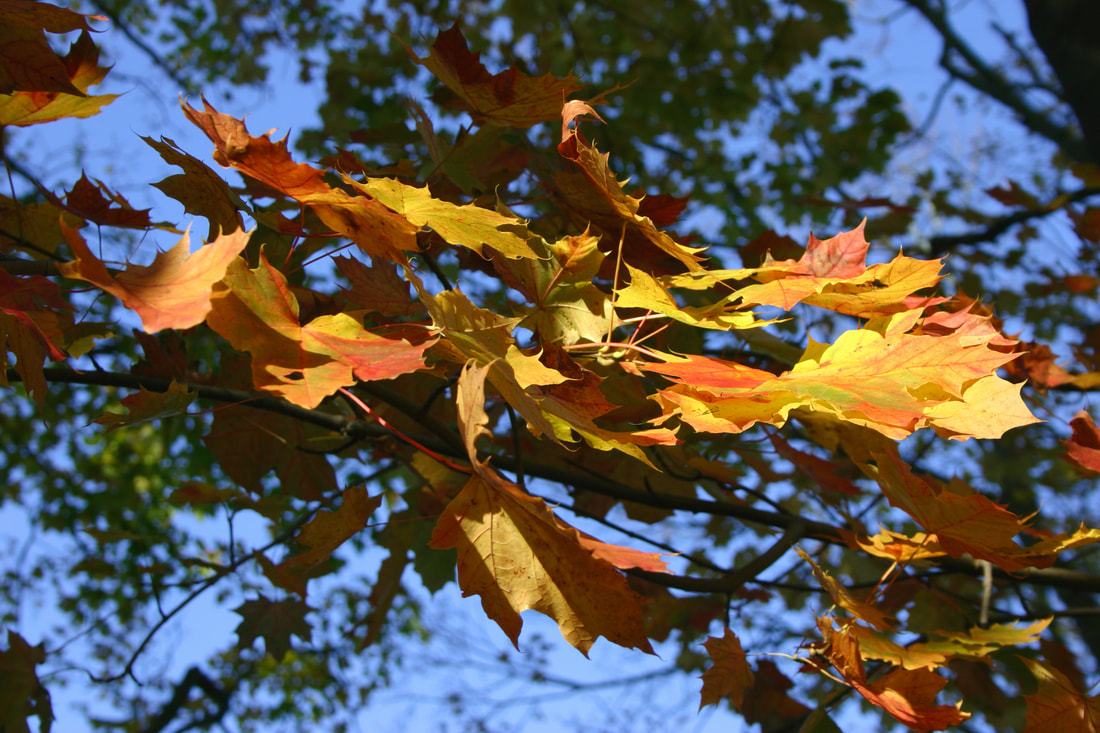

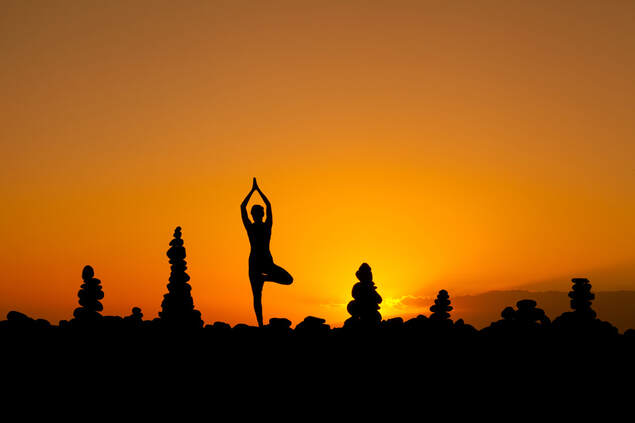

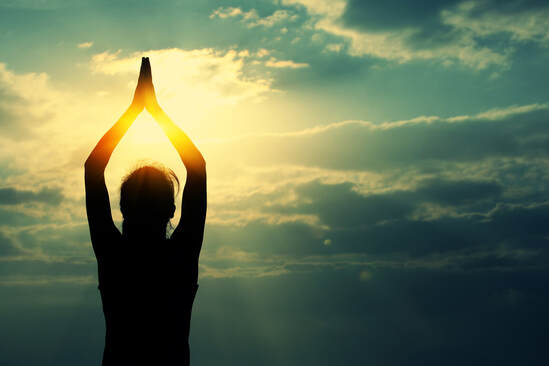
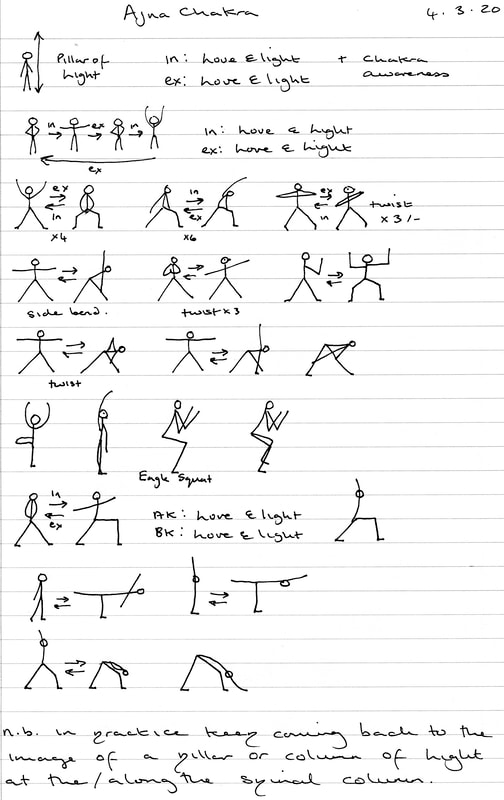
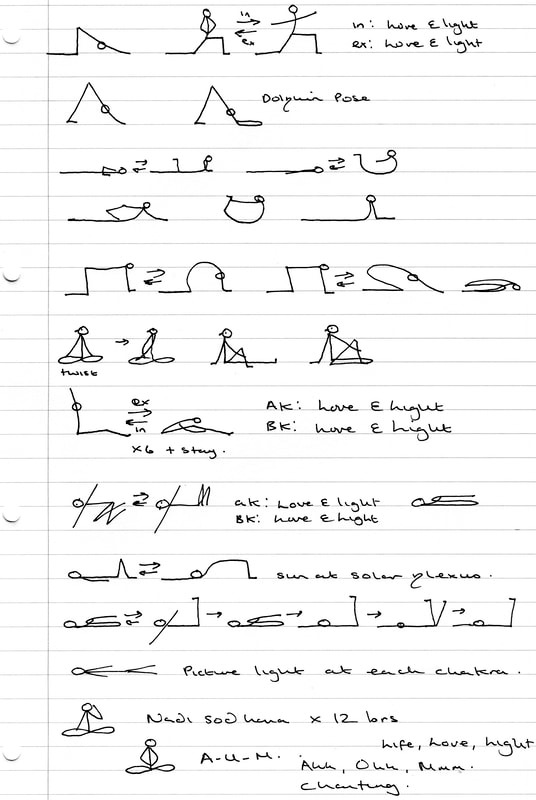

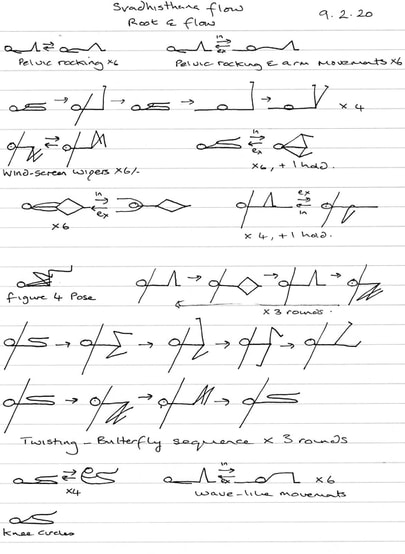
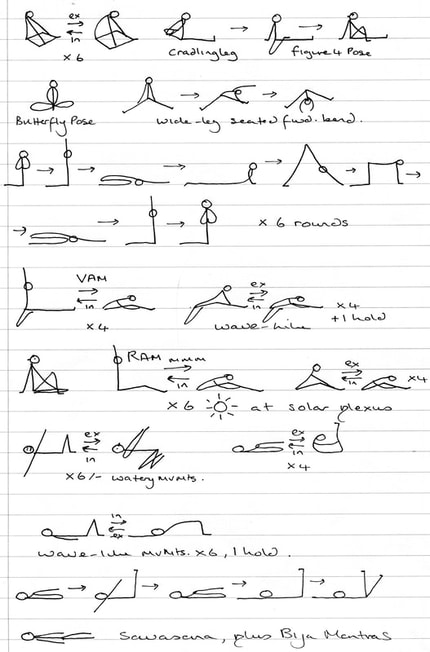
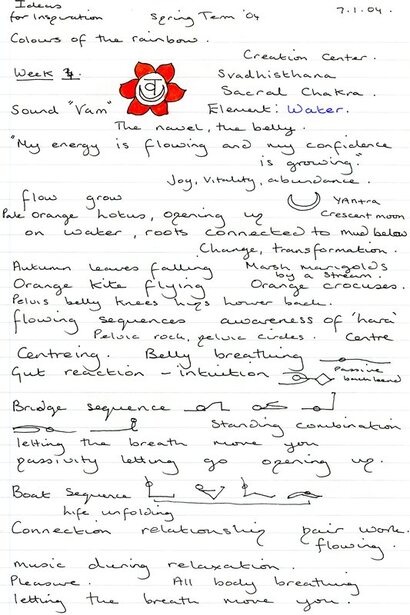
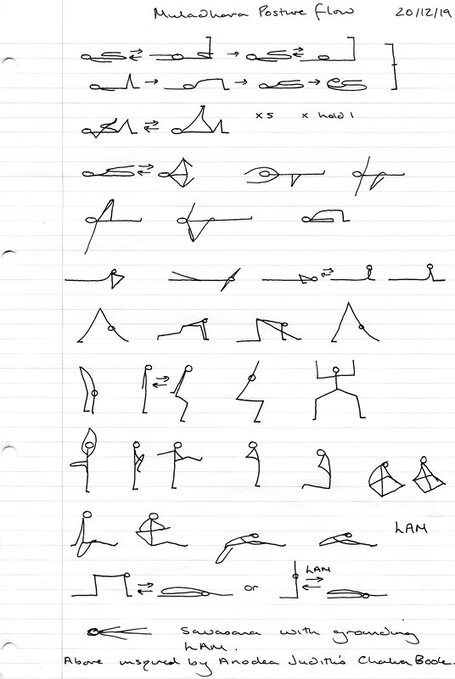
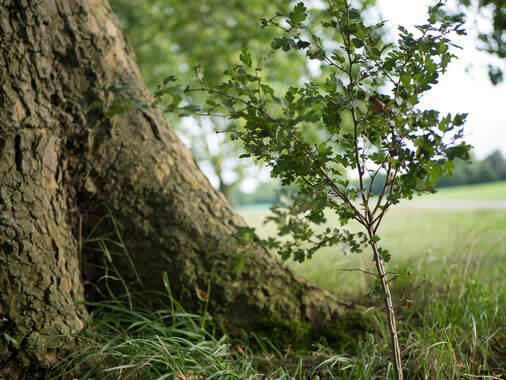
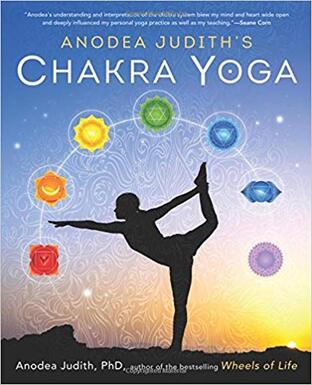
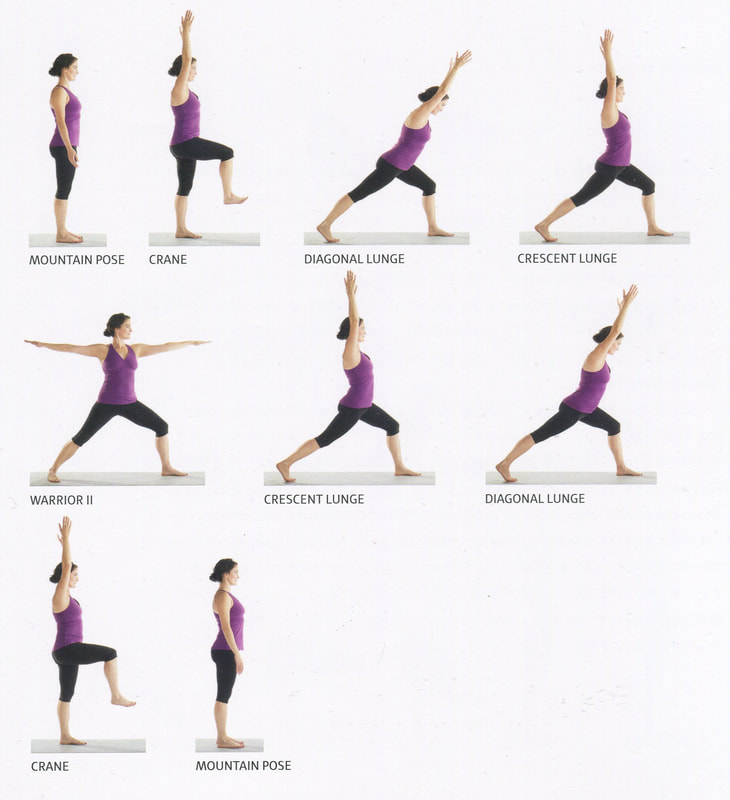

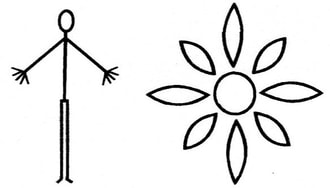
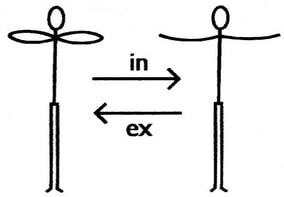

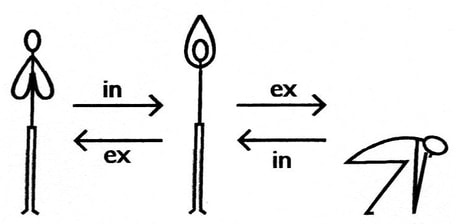



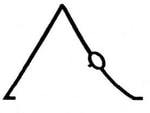

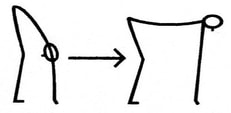
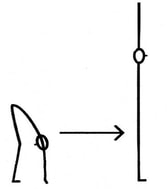
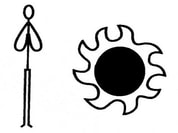


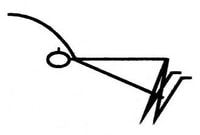
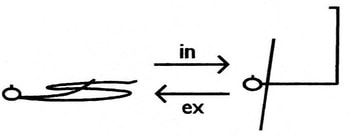
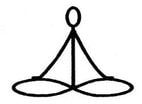
 RSS Feed
RSS Feed